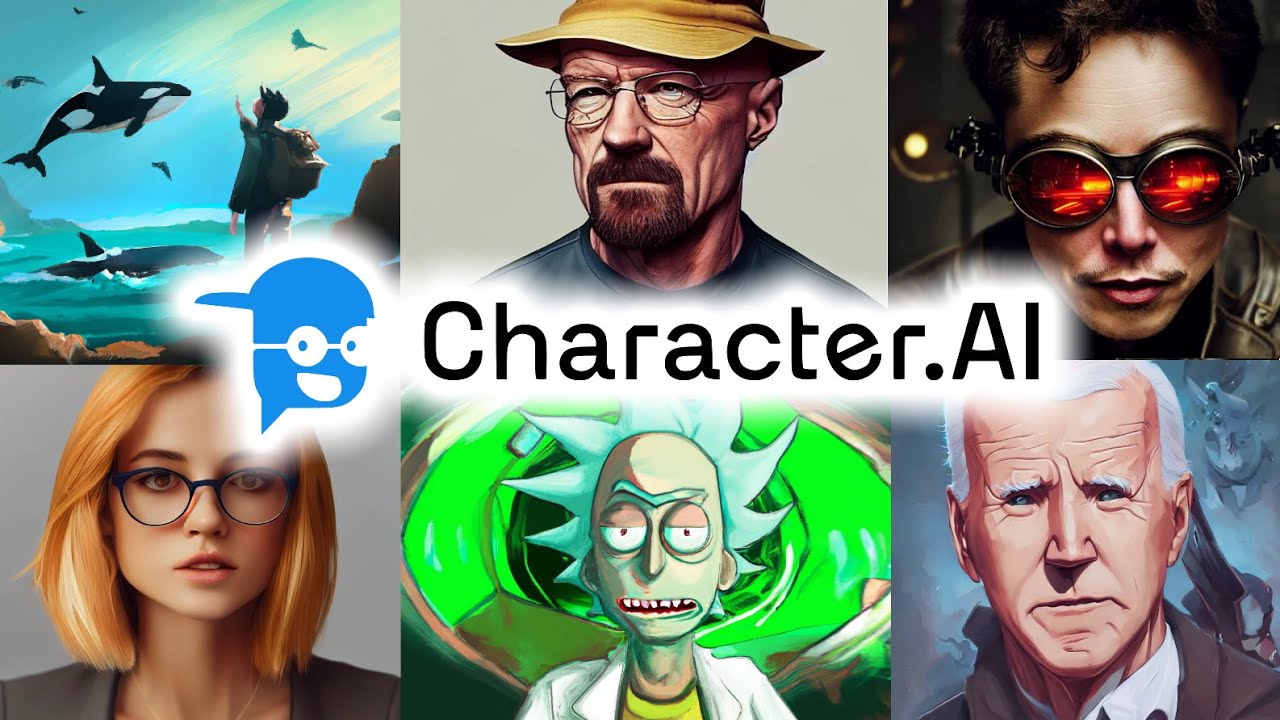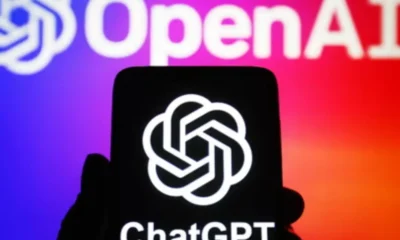AMAZON
ChatGPT rivals Anthropic AI and Character AI reportedly chasing megabuck funding rounds

Artificial intelligence startups Anthropic AI and Character Technologies Inc. are reportedly closing on blockbuster funding rounds backed by a number of high-profile venture capital firms, according to reports this weekend.
In the case of Anthropic, the New York Times Friday cited two people with knowledge of the matter as saying it’s zeroing in on a $300 million round of funding. Character AI, meanwhile, has told investors it’s seeking $250 million in fresh funding, according to a report Friday in The Information.
The proposed rounds are yet more evidence of the incredible excitement generated by the potential of so-called “generative AI,” which refers to AI algorithms that can generate text, images,and other media when prompted to do so by users. It’s an exciting technology that has made hundreds of headlines following the launch of OpenAI LLC’s ChatGPT AI model last year. ChatGPT has amazed more than 1 million users through its ability to answer almost any kind of question with humanlike clarity.
Generative AI has been the subject of years of research and it seems that these efforts are finally beginning to pay off. Analysts believe the capabilities displayed by ChatGPT could be useful in dozens of applications, and perhaps even rival Google LLC in online search.
ChatGPT’s success recently prompted Microsoft Corp. to invest an additional $10 billion in OpenAI, and now other investors are determined to get in on the action by backing its most promising rivals.
Anthropic is one such company. Started by former OpenAI employees, it has already raised more than $700 million in funding. It ‘ the creator of an AI chatbot named Claude that’s similar to ChatGPT. Currently, it’s only available in beta via a Slack integration, though reports say that it has demonstrated significant improvements over its more famous rival.
Anthropic’s creators told TechCrunch in an interview that they created Claude using a process known as “Constitutional AI,” which involves creating a list of 10 principles that act as a kind of “constitution” for the system. The principles haven’t been revealed, but Anthropic says they’re based on concepts such as beneficence, non-maleficence and autonomy. The idea is to align Claude with human intentions and enable it to respond to questions without deviating from this guiding set of principles.
The proposed $300 million funding round for Anthropic would value the company at roughly $5 billion, the Times reported.
As for Character AI, it was founded by two former Google researchers who previously worked on that company’s internal LaMDA system. It has reportedly created a neural language model chatbot web application based on LaMDA that is able to generate humanlike text responses and participate in contextual conversation.
With Google still much more cautious about AI responsibility and safety, Character.ai’s co-founders Noam Shazeer and Daniel De Freitas told the Washington Post that they left the company in order to bring the technology into the public realm as quickly as possible. The result is a fun website that lists multiple AI chatbots based on Character.ai’s models, where anyone can chat with a virtual Donald Trump, Elon Musk, Chinese President Xi Jingping, the infamous Walter White of “Breaking Bad,” and many other characters real and fictional.
If Character AI is able to get the $250 million it’s seeking, that would bring its value to at least $1 billion, The Information reported. It has reportedly held talks with top-tier VCs including Sequoia Capital, though discussions are still at an early stage and it remains to be seen if they will succeed.
The stakes are high for investors, who have shown big enthusiasm for generative AI at a time when funding for many other startups appears to be drying up. For the VCs, choosing the right generative AI startup is key, because it’s rare for them to back more than one company in the same category, for competitive reasons. So backing the wrong horse now could mean they miss out on what has the potential to be an incredibly lucrative and transformational new technology movement.
The Times says there are reports that other generative AI startups, such as Luka Inc., the creator of another chatbot technology called Replika, and You.com, which aims to integrate generative AI with online search, are also receiving unsolicited attention from VCs.
VCs will be aware that generative AI is still a very new technology and that none of these startups has really figured out how they’re going to make money. That said, this has rarely dissuaded Silicon Valley investors in the past, with the standard operating model being to pour money into new technologies and enable adoption, before working out how to make money from them later.
Image: Character AI
Show your support for our mission by joining our Cube Club and Cube Event Community of experts. Join the community that includes Amazon Web Services and Amazon.com CEO Andy Jassy, Dell Technologies founder and CEO Michael Dell, Intel CEO Pat Gelsinger and many more luminaries and experts.
AMAZON
How Auto-GPT will revolutionize AI chatbots as we know them

Artificial intelligence chatbots such as OpenAI LP’s ChatGPT have reached a fever pitch of popularity recently not just for their ability to hold humanlike conversations, but because they can perform knowledge tasks such as research, searches and content generation.
Now there’s a new contender taking social media by storm that extends the capabilities of OpenAI’s offering by automating its abilities even further: Auto-GPT. It’s part of a new class of AI tools called “autonomous AI agents” that take the power of GPT-3.5 and GPT-4, the generative AI technologies behind ChatGPT, to approach a task, build on its own knowledge, and connect apps and services to automate tasks and perform actions on the behalf of users.
ChatGPT might seem magical to users for its ability to answer questions and produce content based on user prompts, such as summarizing large documents or generating poems and stories or writing computer code. However, it’s limited in what it can do because it’s capable of doing only one task at a time. During a session with ChatGPT, a user can prompt the AI with only one question at a time and refining those prompts or questions can be a slow and tedious journey.
Auto-GPT, created by game developer Toran Bruce Richards, takes away these limitations by allowing users to give the AI an objective and a set of goals to meet. Then it spawns a bot that acts like a person would, using OpenAI’s GPT model to perform AI prompts in order to approach that goal. Along the way, it learns to refine its prompts and questions in order to get better results with every iteration.
It also has internet connectivity in order to gather additional information from searches. Moreover, it has short- and long-term memory through database connections so that it can keep track of sub-tasks. And it uses GPT-4 to produce content such as text or code when required. Auto-GPT is also capable of challenging itself when a task is incomplete and filling in the gaps by changing its own prompts to get better results.
According to Richards, although current AI chatbots are extremely powerful, their inability to refine their own prompts on the fly and automate tasks is a bottleneck. “This inspiration led me to develop Auto-GPT, which can apply GPT-4’s reasoning to broader, more complex problems that require long-term planning and multiple steps,” he told Vice.
Auto-GPT is available as open source on GitHub. It requires an application programming interface key from OpenAI to access GPT-4. And to use it, people will need to install Python and a development environment such as Docker or VS Code with a Dev Container extension. As a result, it might take a little bit of technical knowhow to get going, though there’s extensive setup documentation.
How does it work?
In a text interface, Auto-GPT asks the user to give the AI a name, a role, an objective and up to five goals that it should reach. Each of these defines how the AI agents will approach the action the user wants and how it will deliver the final product.
First, the user sets a name for the AI, such as “RestaurantMappingApp-GPT,” and then set a role, such as “Develop a web app that will provide interactive maps for nearby restaurants.” The user can then set a series of goals, such as “Write a back-end in Python” and “Program a front end in HTML,” or “Offer links to menus if available” and “Link to delivery apps.”
Once the user hits enter, Auto-GPT will begin launching agents, which will produce prompts for GPT-4, then approach the original role and each of the different goals. Finally, it will then begin refining and recursing through the different prompts that will allow it to connect to Google Maps using Python or JavaScript.
It does this by breaking the overall job into smaller tasks to work on each, and it uses a primary monitoring AI bot that acts as a “manager” to make sure that they coordinate. This particular prompt asks the bot to build a somewhat complex app that could go awry if it doesn’t keep track of a number of different moving parts, so it might take a large number of steps to get there.
With each step, each AI instance will “narrate” what it’s doing and even criticize itself in order to refine its prompts depending on its approach toward the given goal. Once it reaches a particular goal, each instance will finalize its process and return its answer back to the main management task.
Trying to get ChatGPT or even the more advanced, subscription-based GPT-4 to do this without supervision would take a large number of manual steps that would have to be attended to by a human being. Auto-GPT does them on its own.
The capabilities of Auto-GPT are beneficial for neophyte developers looking to get ahead in the game, Brandon Jung, vice president of ecosystem at AI-code completion tool provider Tabnine Ltd., told SiliconANGLE.
“One benefit is that it’s a good introduction for those that are new to coding, and it allows for quick prototyping,” Jung said. “For use cases that don’t require exactness or have security concerns, it could speed up the creation process without having to be part of a broader system that includes an expert for review.”
Being able to build apps rapidly, including all the code all at once, from a simple series of text prompts would bring a lot of new templates for code into the hands of developers. Essentially providing them with rapid solutions and foundations to build on. However, they would have to go through a thorough review first before being put into production.
What kind of applications can Auto-GPT be used for?
That’s just one example of Auto-GPT’s capabilities. With its capabilities, it has wide-reaching possibilities that are currently being explored by developers, project managers, AI researchers and anyone else who can download its source code.
“There are numerous examples of people using Auto-GPT to do market research, create business plans, create apps, automate complex tasks in pursuit of a goal, such as planning a meal, identifying recipes and ordering all the ingredients, and even execute transactions on behalf of the user,” Sheldon Monteiro, chief product officer at the digital business transformation firm Publicis Sapient, told SiliconANGLE.
With its ability to search the internet, Auto-GPT can be tasked with quick market research such as “Find me five gaming keyboards under $200 and list their pros and cons.” With its ability to break a task up into multiple subtasks, the autonomous AI could then rapidly search multiple review sites, produce a market research report and come back with a list of gaming keyboards that come in under that amount and supply their prices as well as information about them.
A Twitter user named MOE created an Auto-GPT bot named “Isabella” that can autonomously analyze market data and outsource to other AIs. It does so by using the AI framework Lang-chain to gather data autonomously and do sentiment analysis on different markets.
autogpt was trying to create an app for me, recognized I don’t have Node, googled how to install Node, found a stackoverflow article with link, downloaded it, extracted it, and then spawned the server for me.
My contribution? I watched. pic.twitter.com/2QthbTzTGP
— Varun Mayya (@VarunMayya) April 6, 2023
Because Auto-GPT has access to the internet, and it can take actions on behalf of the user, it can also install applications. In the case of Twitter user Varun Mayya, who ask the bot to build some software, it discovered that he did not have Node.js installed – an environment that allows JavaScript to be run locally instead of in a web browser. As a result, it searched the internet, discovered a StackOverflow tutorial and installed it for him so it could proceed with building the app.
Auto-GPT isn’t the only autonomous agent AI currently available. Another that has come into vogue is BabyAGI, which was created by Yohei Nakajima, a venture capitalist and artificial intelligence researcher. AGI refers to “artificial general intelligence,” a hypothetical type of AI that would have the ability to perform any intellectual task – but no existing AI is anywhere close. BabyAGI is a Python-based task management system that uses the OpenAI API, like Auto-GPT, that prioritizes and builds new tasks toward an objective.
There are also AgentGPT and GodMode, which are much more user-friendly in that they use a web interface instead of needing an installation on a computer, so they can be accessed as a service. These services lower the barrier to entry by making it simple for users because they don’t require any technical knowledge to use and will perform similar tasks to Auto-GPT, such as generating code, answering questions and doing research. However, they can’t write documents to the computer or install software.
Autonomous agents are powerful but experimental
These tools do have drawbacks, however, Monteiro warned. The examples on the internet are cherry-picked and paint the technology in a glowing light. For all the successes, there are a lot of issues that can happen when using it.
“It can get stuck in task loops and get confused,” Monteiro said. “And those task loops can get pretty expensive, very fast with the costs of GPT-4 API calls. Even when it does work as intended, it might take a fairly lengthy sequence of reasoning steps, each of which eats up expensive GPT-4 tokens.”
Accessing GPT-4 can cost money that varies depending on how many tokens are used. Tokens are based on words or parts of phrases sent through the chatbot. Charges range from three cents per 1,000 tokens for prompts to six cents per 1,000 tokens for results. That means using Auto-GPT running through a complex project or getting stuck in a loop unattended could end up costing a few dollars.
At the same time, GPT-4 can be prone to errors, known as “hallucinations,” which could spell trouble during the process. It could come up with totally incorrect or erroneous actions or, worse, produce insecure or disastrously bad code when asked to create an application.
“[Auto-GPT] has the ability to execute on previous output, even if it gets something wrong it keeps going on,” said Bern Elliot, a distinguished vice president analyst at Gartner. “It needs strong controls to avoid it going off the rails and keeping on going. I expect misuse without proper guardrails will cause some damaging unexpected and unintended outcomes.”
The software development side could be equally problematic. Even if Auto-GPT doesn’t make a mistake that causes it to produce broken code, which would cause the software to simply fail, it could create an application riddled with security issues.
“Auto-GPT is not part of a full software development lifecycle — testing, security, et cetera — nor is it integrated into an IDE,” Jung said, warning about the potential issues that could arise from the misuse of the tool. “Abstracting complexity is fine if you are building on a strong foundation. However, these tools are by definition not building strong code and are encouraging bad and insecure code to be pushed into production.”
The future of Auto-GPT and other autonomous agents
Tools such as Auto-GPT, BabyAGI, AgentGPT and GodMode are still experimental, but there are broader implications in how they could be used to replace routine tasks such as vacation planning or shopping, explained Monteiro.
Right now, Microsoft has even developed simple examples of a plugin for Bing Chat. It allows users to ask it to offer them dinner suggestions that will have its AI – which is powered by GPT-4 – will roll up a list of ingredients and then launch Instacart to have them prepared for delivery. Although this is a step in the direction of automation, bots such as Auto-GPT are edging toward a potential future of all-out autonomous behaviors.
A user could ask for Auto-GPT to look through local stores, prepare lists of ingredients, compare prices and quality, set up a shopping cart and even complete orders autonomously. At this experimental point, many users may not be willing to allow the bot to go all the way through with using their credit card and deliver orders all on its own, for fear that it could go haywire and send them several hundred bunches of basil.
A similar future where an AI does this for travel agents using Auto-GPT may not be far away. “Give it your parameters — beach, four-hour max travel, hotel class — and your budget, and it will happily do all the web browsing for you, comparing options in quest of your goal,” said Monteiro. “When it is done, it will present you with its findings, and you can also see how it got there.”
As these tools begin to mature, they have a real chance of providing a way for people to automate away mundane step-by-step tasks that happen on the internet. That could have some interesting implications, especially in e-commerce.
“How will companies adapt when these agents are browsing sites and eliminating your product from the consideration set before a human even sees the brand?” said Monteiro. “From an e-commerce standpoint, if people start using Auto-GPT tools to buy goods and services online, retailers will have to adapt their customer experience.”
* Image: Freepik
AMAZON
The Top 10 Benefits of Amazon AWS Lightsail: Why It’s a Great Choice for Businesses

Amazon Web Services (AWS) is a popular cloud computing platform that offers a wide range of services to individuals and businesses alike. One of the services offered by AWS is Amazon Lightsail, which is a simplified and user-friendly way to launch and manage virtual private servers (VPS). In this article, we will discuss the benefits of using Amazon Lightsail for your business.
Cost-effective
One of the primary advantages of using Amazon Lightsail is its cost-effectiveness. The service offers a flat monthly fee for each instance, which makes it easy to predict costs and plan for your budget. Moreover, the pricing is transparent, with no hidden costs or surprises.

User-friendly
Amazon Lightsail is designed to be user-friendly, making it easy for even non-technical users to deploy and manage virtual private servers. The platform provides a simplified control panel that includes pre-configured software packages, such as WordPress, LAMP, and more. These packages are preconfigured, making it easy to deploy and set up a web application in minutes.
Scalable
Amazon Lightsail is designed to be scalable, which means you can easily upgrade your resources as your business grows. The platform provides a range of instance sizes to choose from, with varying CPU, RAM, and storage options. You can also scale up or down as needed, making it easy to manage your resources and costs.
Reliable
Amazon Lightsail is built on top of the AWS infrastructure, which means it benefits from AWS’s robust and reliable cloud infrastructure. This ensures that your applications and data are always available and accessible, with minimal downtime.
Secure
Amazon Lightsail provides a secure and reliable environment for your applications and data. The platform includes a range of security features, such as built-in firewalls, DDoS protection, and SSL/TLS encryption. Moreover, Lightsail instances are isolated from each other, which provides an additional layer of security.
Integrated with AWS services
Amazon Lightsail is fully integrated with other AWS services, making it easy to use Lightsail with other AWS services such as Amazon S3, Amazon RDS, and more. This integration provides a comprehensive cloud computing platform, enabling you to build and run complex applications.
Quick and easy deployment
Amazon Lightsail provides a quick and easy way to deploy web applications, with pre-configured templates for popular applications such as WordPress, Drupal, Joomla, and more. This makes it easy to deploy a web application in just a few clicks, without the need for technical knowledge.
High-performance
Amazon Lightsail instances are built on top of the latest generation of AWS infrastructure, providing high-performance and low-latency connectivity. This ensures that your applications and data are always accessible and responsive, with fast and efficient data transfer.
Easy to manage
Amazon Lightsail provides a simplified management interface, making it easy to manage your virtual private servers. The platform includes tools for monitoring your instances, configuring backups, managing DNS records, and more. Moreover, the platform provides a range of APIs and CLI tools, making it easy to automate management tasks.
Flexible
Amazon Lightsail is flexible, allowing you to choose the operating system and software stack that best suits your needs. The platform supports a range of operating systems, including Ubuntu, Debian, CentOS, and more. Moreover, you can install and configure any software stack that you need, giving you complete control over your environment.
In conclusion, Amazon Lightsail is a cost-effective, user-friendly, scalable, reliable, secure, integrated, quick, high-performance, easy-to-manage, and flexible platform for deploying and managing virtual private servers. If you’re looking for a simplified and efficient way to manage your cloud computing resources, Amazon Lightsail is definitely worth considering.
Get started today with Amazon Lightsail
AMAZON
Binance’s BNB Chain to Offer New Decentralized Storage System

The release of the decentralized storage system’s white paper was having a modest effect on the price of other storage tokens on Wednesday. Filecoin (FIL), storj (STORJ), and arweave (AR) are now trading 2%, 5% and 6%, respectively, above their pre-announcement prices.
-

 PPC5 days ago
PPC5 days ago19 Best SEO Tools in 2024 (For Every Use Case)
-
SEARCHENGINES7 days ago
Daily Search Forum Recap: April 17, 2024
-
SEARCHENGINES6 days ago
Daily Search Forum Recap: April 18, 2024
-
SEARCHENGINES5 days ago
Daily Search Forum Recap: April 19, 2024
-

 MARKETING6 days ago
MARKETING6 days agoEcommerce evolution: Blurring the lines between B2B and B2C
-

 SEO6 days ago
SEO6 days ago2024 WordPress Vulnerability Report Shows Errors Sites Keep Making
-

 WORDPRESS5 days ago
WORDPRESS5 days agoHow to Make $5000 of Passive Income Every Month in WordPress
-

 WORDPRESS6 days ago
WORDPRESS6 days ago10 Amazing WordPress Design Resouces – WordPress.com News















You must be logged in to post a comment Login